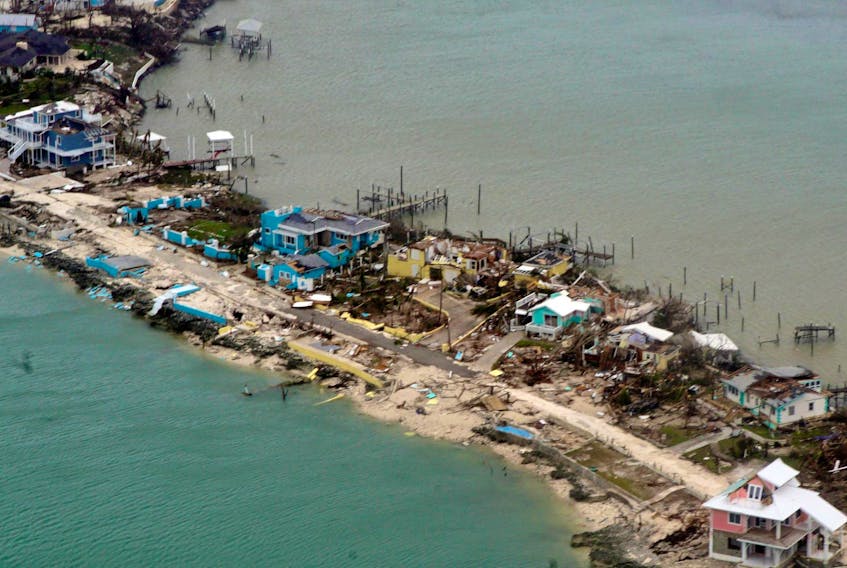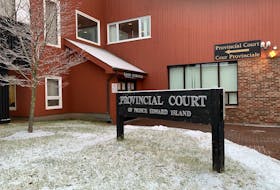In the wake of hurricane Dorian, some parts of the Bahamas were simply swallowed by the sea.
It’s a stark illustration of the connection between hurricanes and sea levels, according to Dalhousie University researcher Anya Waite.
“A hurricane is your ultimate big, deep low-pressure system and when you have low pressure, it basically allows the sea level to rise higher,” said Waite, who is the scientific director of the Ocean Frontier Institute at Dalhousie.
“If you pump something up to high pressure, it’s like pushing a force downward. When you lift it up, when you lower the atmospheric pressure, it’s essentially putting less force down on the ocean and allowing the ocean to rise up. It’s just plain physics.”
- Stay up to date with Saltwire meteorologist Cindy Day's latest forecast
- Follow Cindy Day on Facebook
That interaction only lifts the sea level by a few centimetres but, of course, hurricanes also come with high winds and lots of rain. In the case of Dorian, which packed winds of almost 300 kilometres per hour and dropped over 700 millimetres of rain as it stalled over the Bahamas for almost two days, the effects have been disastrous.
The behaviour of an individual storm depends upon how far away it is and its intensity, Waite said.
“So it makes it super unpredictable and frustrating ...”
We should expect more intense hurricanes like Dorian, as well as rising sea levels as carbon emissions drive global warming, she warned.
“We’re already in trouble,” she said. “We already know that in 100 years, global sea levels are expected to rise approximately one metre above their current levels. And we can just see from the construction that’s happening along Nova Scotia, many people are not really taking that into account when they put buildings and houses and so on near the ocean.
“That’s already going to be an issue even without further global warming. We’re still on a track to have a sea-level rise and we need to be working together with communities, governments and researchers to help develop solutions.”
The storm, which was a Category 2 hurricane Wednesday off Florida, likely will weaken into a post-tropical system by Saturday afternoon over Nova Scotia.
But Saltwire meteorologist Cindy Day said we still should be prepared for rainfall of up to 100 millimetres and winds gusting above 80 kilometres per hour.
A high pressure system in the southern Atlantic likely will keep the system off the Atlantic coast, Day said in her forecast Wednesday morning. A less likely scenario is that Dorian interacts with a low pressure system to the west of the Maritimes, which could draw the storm more toward the Bay of Fundy.
“It looks like it will enter Canadian waters as a Category 1 and then I think it will fairly quickly diminish,” Day said, noting that the track of the storm and whether it’s over warmer waters to the south of Nova Scotia will dictate its strength.
“If it stays further off our coastline, it will remain a very powerful storm,” she said. “If it comes in a little closer, we’ll get more rain but it will break down a little more quickly because of the cooler water temperatures.
“The biggest rain bands are always along the western side of the system and we’re expecting some of the heavier rain to be in Halifax and west, the southeast corner of New Brunswick and across Prince Edward Island. There’ll be some heavy rain as well through the southwest corner of Newfoundland.”
Meanwhile, fundraising efforts to help the Bahamas recover from the devastation left by Dorian are underway. The Dalhousie Black Faculty and Staff Caucus said it will work with students and others to organize relief supply drives on the Dalhousie campus and in Halifax.
People are asked to donate items such as hygiene supplies, toiletries, medical supplies, non-perishable food, blankets and sheets, and clothing. Donation boxes will be set up throughout the Dalhousie campus and at offices and businesses around Halifax.
As well, Saint Mary’s University cheerleaders plan to hold a clothing drive at the university on Thursday. And there will be a fundraiser at Jamaica Vibes restaurant on Spring Garden on Sunday from 3 p.m. to 9 p.m.
A GoFundMe fundraiser called Help from Halifax: Rebuilding Bahamas has also been set up to help the family of Matthew Saunders, a Bahamian who now lives in Halifax. Saunders’ family in Abaco lost their home and possessions in the hurricane.
RELATED:
Dorian likely to be post-tropical when it hits Atlantic Canada
Bahamas searches for Dorian survivors as storm heads for Florida, Georgia
Dorian underlines coastal cities' endless rebuilding task









